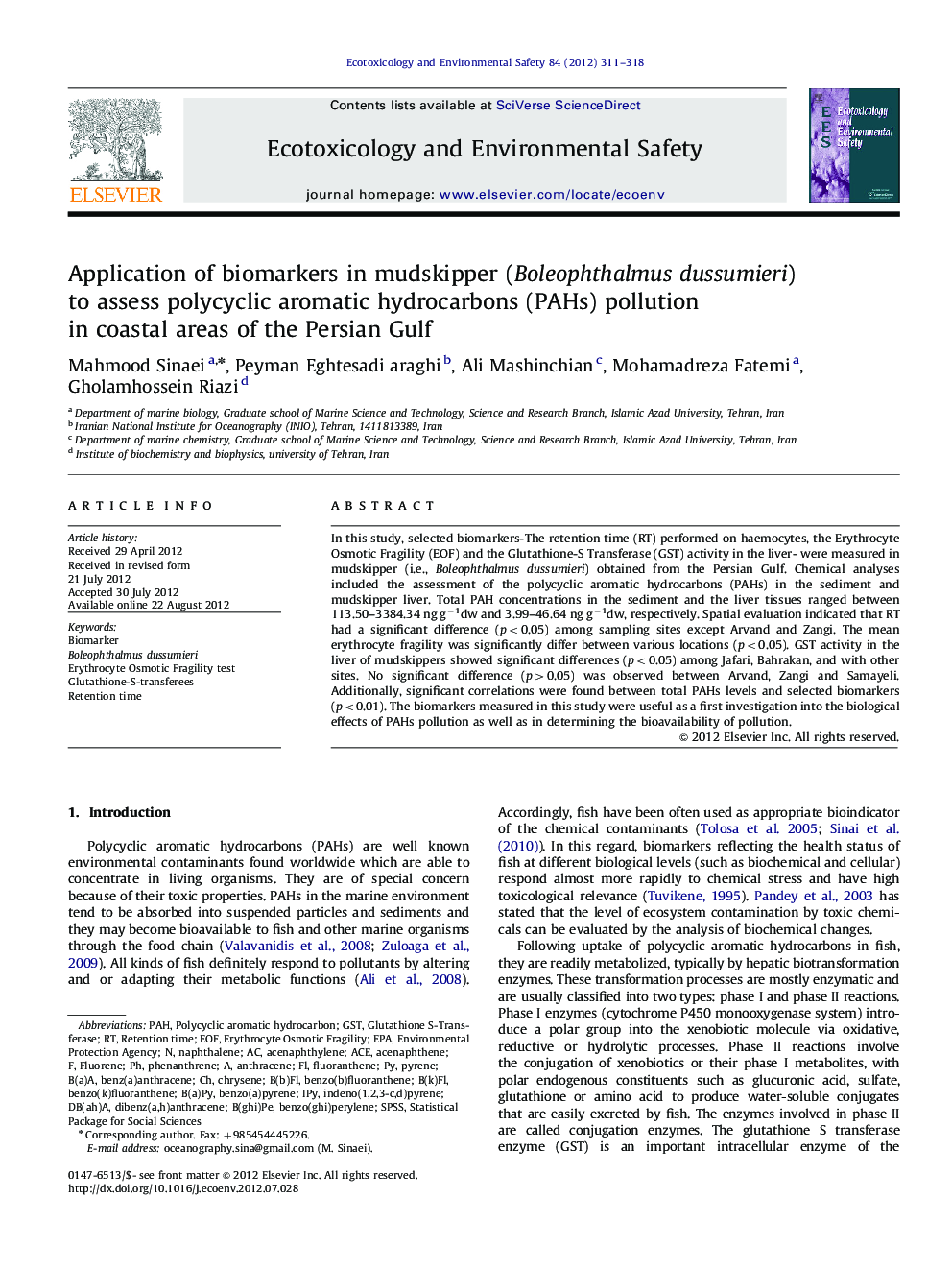| Article ID | Journal | Published Year | Pages | File Type |
|---|---|---|---|---|
| 4420760 | Ecotoxicology and Environmental Safety | 2012 | 8 Pages |
In this study, selected biomarkers-The retention time (RT) performed on haemocytes, the Erythrocyte Osmotic Fragility (EOF) and the Glutathione-S Transferase (GST) activity in the liver- were measured in mudskipper (i.e., Boleophthalmus dussumieri) obtained from the Persian Gulf. Chemical analyses included the assessment of the polycyclic aromatic hydrocarbons (PAHs) in the sediment and mudskipper liver. Total PAH concentrations in the sediment and the liver tissues ranged between 113.50–3384.34 ng g−1dw and 3.99–46.64 ng g−1dw, respectively. Spatial evaluation indicated that RT had a significant difference (p<0.05) among sampling sites except Arvand and Zangi. The mean erythrocyte fragility was significantly differ between various locations (p<0.05). GST activity in the liver of mudskippers showed significant differences (p<0.05) among Jafari, Bahrakan, and with other sites. No significant difference (p>0.05) was observed between Arvand, Zangi and Samayeli. Additionally, significant correlations were found between total PAHs levels and selected biomarkers (p<0.01). The biomarkers measured in this study were useful as a first investigation into the biological effects of PAHs pollution as well as in determining the bioavailability of pollution.
► RT of the haemocytes, EOF and GST activity in B. dussumieri were variable. ► Measured PAH concentration in sediments and biota were below available standards. ► Significant correlations were found between total PAHs levels and biomarkers. ► Selected biomarkers in B. dussumieri were PAH inducible. ► The analyzed biomarkers in B. dussumieri are suitable to monitor PAH pollution.
